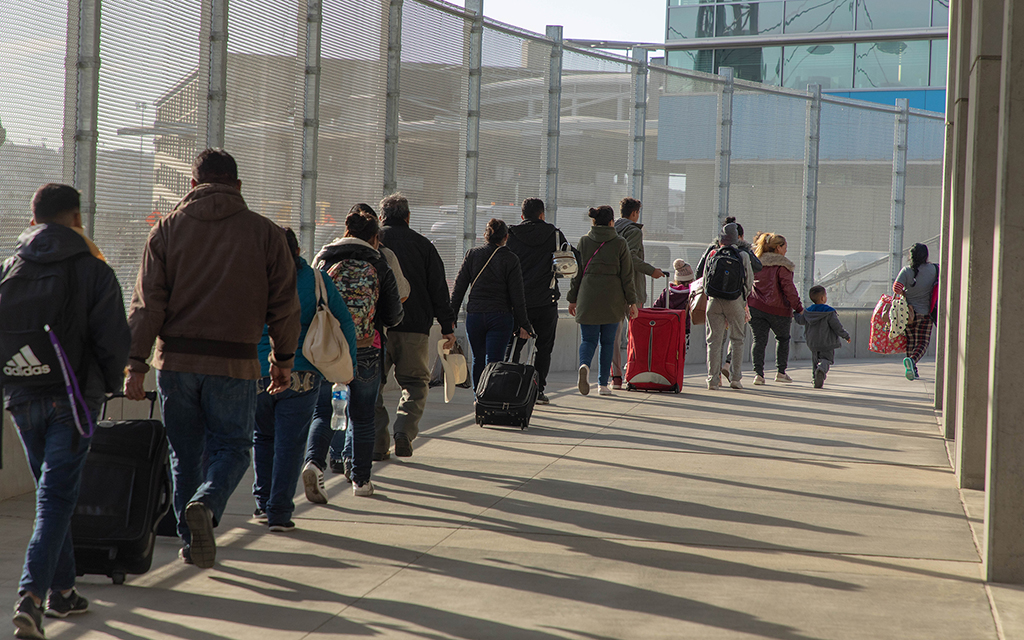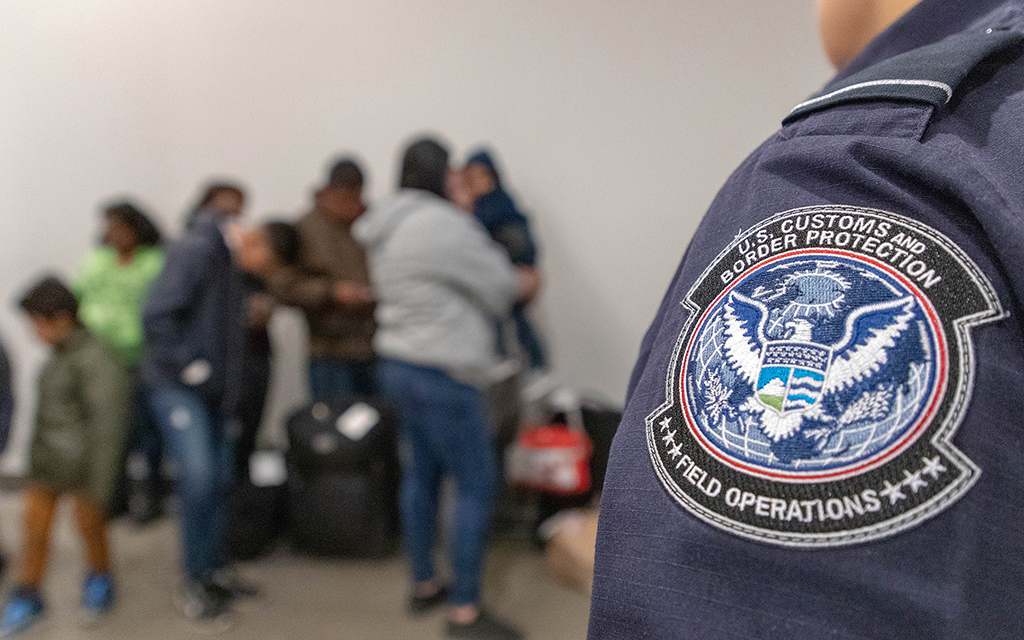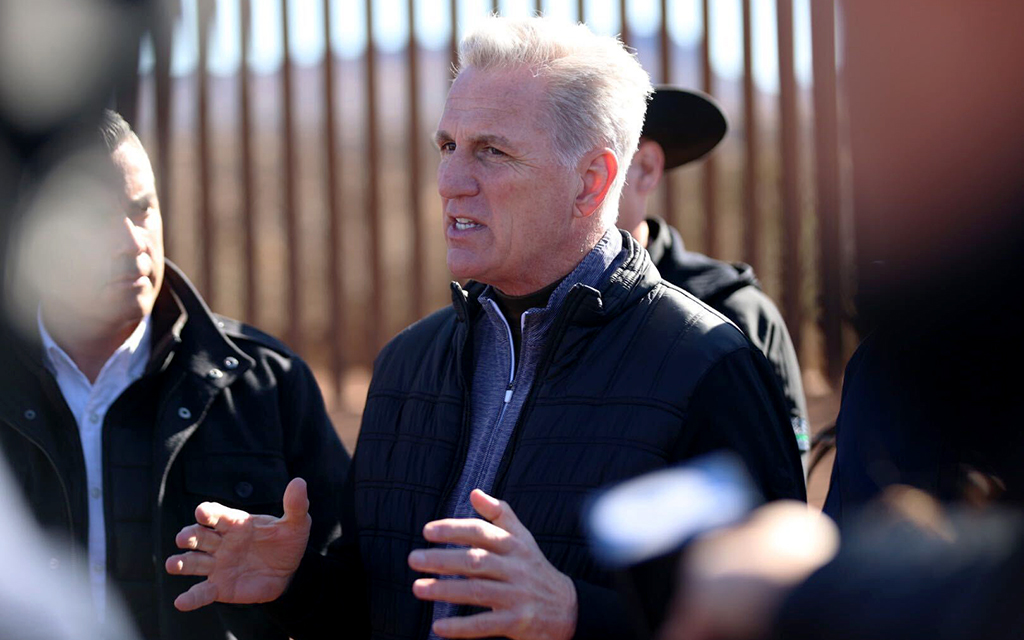WASHINGTON – The White House unveiled a plan Thursday to deny asylum to migrants who try to cross the southwest border illegally or who do not first seek asylum in countries they cross on their way to the U.S. as they flee their home countries.
The administration said the plan is needed to stem an expected migration surge when Title 42 ends in May, and should discourage trafficking by pushing migrants toward a “safe, legal, orderly pathway” to asylum.
But the plan to address “Circumvention of Lawful Pathways,” reminiscent of a Trump-era proposal, appears to have satisfied no one. Migration hardliners say it will encourage more abuse of the asylum system, while migrant advocates say it will worsen the abuse of asylum seekers by stranding them in hostile countries.
Immigrants “would be forced to apply for asylum in countries where their lives may still be in danger while they await decisions from slow-moving, dysfunctional asylum systems that ultimately offer only a fraction of the protection that they need,” said Laura St. John, the legal director at the Florence Immigrant and Refugee Rights Project, in a joint letter with the Kino Border Initiative.
The Federation for American Immigration Reform said in a statement that the proposed rule is “not a serious attempt by the Biden administration to end massive asylum abuse,” but a way to repair “worsening optics of the migration crisis they created.”
It is “designed not to halt the flow of illegal migrants, but merely to create a more orderly process for people to abuse our asylum system,” FAIR said.
The proposal comes despite a sharp drop in southern border crossings in January, from a high of 251,978 migrants in December to 156,274 in January, according to Customs and Border Protection data, a one-month decline of 95,704 people.
But that was still the highest number of border encounters in a January for the past four years, and it came at the end of a year in which CBP recorded a record 2.5 million apprehensions at the southern border.
And the numbers are expected to surge again in May, when the administration lifts the COVID-19 public health emergency and with it the justification for Title 42, a public health policy that allowed border agents to turn migrants away to slow the spread of the virus.
The “elevated levels of encounters anticipated after the lifting of … Title 42″ were cited by the departments of Justice and Homeland Security when they posted the proposed new asylum regulations Thursday.
“These steps are being taken in response to the unprecedented western hemispheric migration challenges – the greatest displacement of people since World War II – and the absence of congressional action to update a very broken, outdated immigration system,” the departments said in a joint release Tuesday.
The rule would “incentivize” migrants to present themselves at ports of entry and seek asylum there, by creating “presumption of asylum inadmissibility” for those who illegally cross into the country. The same presumption would apply to migrants who cross other countries on the way here without seeking asylum in those countries first. A Central American migrant would be required to seek asylum in Mexico, for example, before seeking it in the U.S.
Asylum seekers would also be expected to use the CBP One app to schedule a time to meet with border officials and begin the application process. The administration said use of the app should greatly enhance the ability to process migrants.

Migrants, some seeking asylum, file through the San Ysidro Port of Entry in this 2018 photo. The Biden administration hopes to drive migrants toward ports of entry by denying asylum to those who try to cross the border illegally or who cross another country to get to the U.S. without first applying for asylum in that country. (Photo by Mani Albrecht/U.S. Customs and Border Protection)
But critics call the CBP One app a glitchy, highly dysfunctional system that cannot handle high demand and makes it impossible for families to schedule multiple appointments for different family members, among other problems. They question how migrants without a smartphone or internet access are expected to access the app, and worry about language difficulties in using it.
Aaron Nodjomian-Escajeda, a policy analyst for the U.S. Committee for Refugees and Immigrants (USCRI), said his organization is already seeing family separation because of the app.
“Individuals are more likely to get a spot scheduled to go to the border, and individuals who are in bigger groups or with families or with kids are often not able to do that,” Nodjomian-Escajeda said. “There have been reports from shelters that people wake up at 3 a.m. and they’re extremely stressed out trying to be the first ones onto the app.”
Andrew Arthur, a law and policy fellow for the Center for Immigration Studies (CIS), said the app is not equipped to handle tens of thousands of people scheduling appointments. Even if it does, it will not end the massive backlog in the asylum process, he said.
“There aren’t enough asylum officers to do credible fear interviews for all the people who are coming in, there aren’t enough immigration judges to hear the cases,” said Arthur, whose organization advocates for stricter immigration policy. “Unless you cut off the flow of people who are applying for asylum, you’re not going to be able to respond to that.”
Far from lowering immigration, Arthur said, the planned policy could “break the asylum system.”
Vanessa Pineda, an immigration attorney for the ACLU of Arizona, said the rule will likely increase, rather than discourage, human smuggling and worsen human rights violations that occur while asylum-seekers wait for their cases to be accepted in federal court.
“People ended up, and still are living, across the southern border in Mexico and having to deal with being kidnapped or being raped and all the tragedies that come with being on the border and not being able to enter the United States to seek refuge,” Pineda said.
The government will accept public comment on the proposal until March 27, with an eye toward having it in place in time for the end of Title 42 on May 11. The policy is currently set to expire after two years.
Arthur said the policy system may create an asylum process that is “more orderly,” but still “not legal.” He said the problem is that there are still too many incentives for migrants to come to the U.S.
“If I put a ladder up against my house and leave it there, and some kid climbs up and falls, I’m actually liable in tort for that. That’s an attractive nuisance,” Arthur said. “The Biden administration is creating the biggest attractive nuisance in world history at the southwest border.”
Pineda worries that the rule violates international agreements on asylum, but she is just as concerned that it goes against what America has stood for.
“We’re a melting pot, right? Different countries at different times have come to the United States for different needs and, so, let’s not forget that,” she said.
“Allowing people to seek shelter … before they’re able to embark on that traumatic process of seeking asylum that’s just who we should be, who we used to be as a nation,” she said. “But these last years are really chipping away at that vision.”



